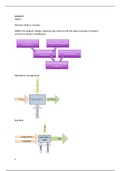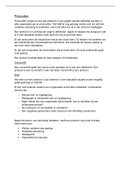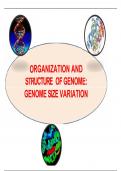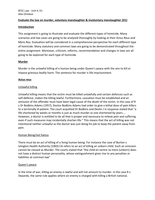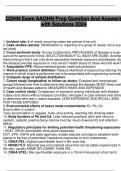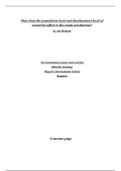U16A1 M2 Assignment
(M2)- Compare the use of motivation theories in an organisation.
There have been several motivation theories that exist that portray many different ideas
and principles surrounding around the question on what makes workers in an organisation
become more motivated and work harder. In this assignment, the several motivation
theories stated in P3 will be compared based on their use in an organisation.
Comparison of Theories
Taylor’s theory brought around the idea of ‘piece rate’, which is a system where an
employee works more in order to get paid more and vice versa. Given the range of job roles
that exists in large global businesses like Tesco, there are several employees that have fixed
salaries that are unlikely to change during the year. However, having a system of ‘piece rate’
pay will more likely motivate them to work harder. This means that employees will aim to
make, sell, or distribute as many products as possible so that they can get a much better
pay, though this depends on the employee and their job role. For instance, employees at
Tesco’s manufacturing companies will want to make and manufacture as many products as
possible for better money. Tesco’s cashiers may want to sell as many products as possible
for better pay, or Tesco’s delivery drivers would want to deliver and distribute as many
products as possible for a pay increase. This theory is incredibly useful if businesses want
their employees to become motivated as financial incentives are a common tool in
increasing motivation. Although, superior figures at Tesco that hold managerial positions
like supervisors and managers would not be motivated with financial incentives. This is
where the comparison with Mayo’s theory is used. Mayo’s theory dictated that money is
not the only factor to motivation, but also performance and achievement are important
factors. Managers and supervisors at Tesco would want there to be more performance and
achievement so that the business can remain as profitable as possible, since Tesco
employees are happier, which will make them be better at their job.
Furthermore, a comparison between Taylor’s theory and Herzberg’s theory can be found.
Though they are similar in the aspect of them introducing effort and performance as a factor
in motivation since in Taylor’s theory, better performance leads to better pay (piece rate)
which led to more motivation and in Herzberg’s theory, recognition and achievement were
found to be factors of motivation that attributed to harder work. In relation to Tesco,
employees such as sales assistants would be affected by the motivators in a way that would
make them work harder and more efficiently, such as being recognised and praised for their
achievements from their superior managers and supervisors. The difference between
Taylor’s theory and Herzberg’s theory is that Taylor stated that money was the sole factor to
induce motivation, whilst Herzberg stated that whilst money is a factor in motivation,
recognition and achievement are motivators, alongside there being hygiene/maintenance
factors that need to be met to prevent de-motivation.
Additionally, another contrasting comparison that can be made with Herzberg’s theory is
the different factors that exist with that theory and theories like McClelland’s theory of
(M2)- Compare the use of motivation theories in an organisation.
There have been several motivation theories that exist that portray many different ideas
and principles surrounding around the question on what makes workers in an organisation
become more motivated and work harder. In this assignment, the several motivation
theories stated in P3 will be compared based on their use in an organisation.
Comparison of Theories
Taylor’s theory brought around the idea of ‘piece rate’, which is a system where an
employee works more in order to get paid more and vice versa. Given the range of job roles
that exists in large global businesses like Tesco, there are several employees that have fixed
salaries that are unlikely to change during the year. However, having a system of ‘piece rate’
pay will more likely motivate them to work harder. This means that employees will aim to
make, sell, or distribute as many products as possible so that they can get a much better
pay, though this depends on the employee and their job role. For instance, employees at
Tesco’s manufacturing companies will want to make and manufacture as many products as
possible for better money. Tesco’s cashiers may want to sell as many products as possible
for better pay, or Tesco’s delivery drivers would want to deliver and distribute as many
products as possible for a pay increase. This theory is incredibly useful if businesses want
their employees to become motivated as financial incentives are a common tool in
increasing motivation. Although, superior figures at Tesco that hold managerial positions
like supervisors and managers would not be motivated with financial incentives. This is
where the comparison with Mayo’s theory is used. Mayo’s theory dictated that money is
not the only factor to motivation, but also performance and achievement are important
factors. Managers and supervisors at Tesco would want there to be more performance and
achievement so that the business can remain as profitable as possible, since Tesco
employees are happier, which will make them be better at their job.
Furthermore, a comparison between Taylor’s theory and Herzberg’s theory can be found.
Though they are similar in the aspect of them introducing effort and performance as a factor
in motivation since in Taylor’s theory, better performance leads to better pay (piece rate)
which led to more motivation and in Herzberg’s theory, recognition and achievement were
found to be factors of motivation that attributed to harder work. In relation to Tesco,
employees such as sales assistants would be affected by the motivators in a way that would
make them work harder and more efficiently, such as being recognised and praised for their
achievements from their superior managers and supervisors. The difference between
Taylor’s theory and Herzberg’s theory is that Taylor stated that money was the sole factor to
induce motivation, whilst Herzberg stated that whilst money is a factor in motivation,
recognition and achievement are motivators, alongside there being hygiene/maintenance
factors that need to be met to prevent de-motivation.
Additionally, another contrasting comparison that can be made with Herzberg’s theory is
the different factors that exist with that theory and theories like McClelland’s theory of

